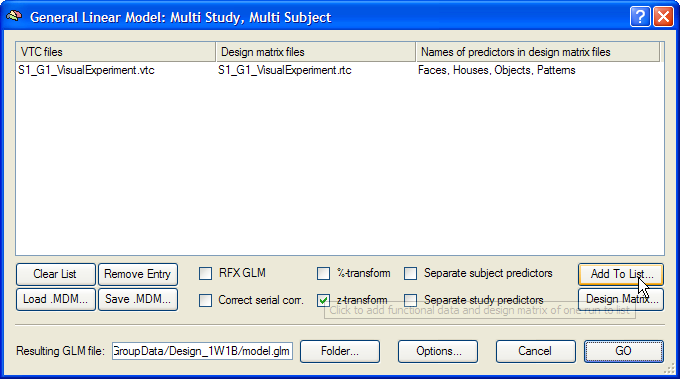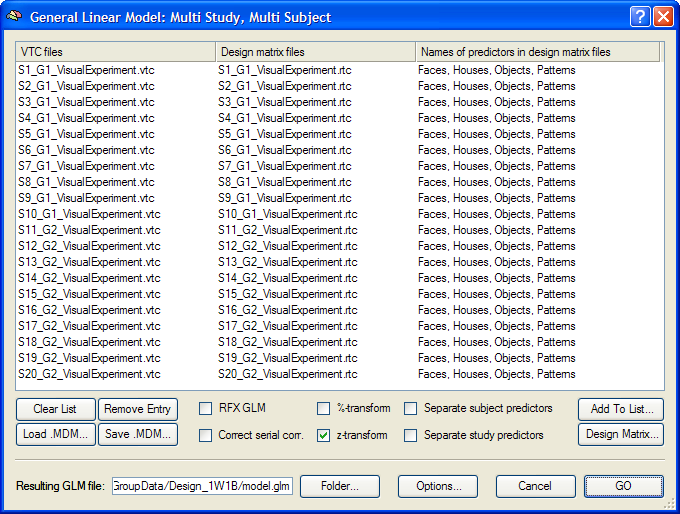BrainVoyager v23.0
Fixed Effects (FFX) Group Analysis
Fixed effects (FFX) analysis allows to integrate the data from multiple subjects into a single GLM analysis. Under the assumption that voxels (or vertices) with the same coordinates in different brains access corresponding brain regions, fixed effects analysis provide high sensitivity to reveal subtle effects due to the large amount of measurement time points across all subjects. In a fixed effects analysis, the data time points from all subjects are treated as coming from a single subject. While this way of combining the data leads to high statistical power, the results are strictly valid only for the investigated group(s) of subjects. In order to be able to generalize the data to the population from which the sample of subjects have been drawn, a random effects group analysis has to be performed, which explicitly models the inter-subject variability.
In a fixed effects analysis, the data from all runs of all subjects is concatenated as well as the design matrices. The error variance is estimated from the variance of the residuals and the number of overall data points (determining the degrees-of-freedom). Due to the potentially large number of time points (high number of degrees-of-freedom), statistical tests of fixed effects are very sensitive.
Running a multi-subject, multi-run fixed effects GLM requires creation of an appropriate multi-study design matrix (MDM) file. The MDM file can be created using the General Linear Model: Multi-Study, Multi-Subject dialog (see below). and add each subject's VTC and design matrix (RTC) file. For each run of each subject, which should be included in the analysis, select a functional data file (e.g. VTC for VMR projects) and a single-run design matrix (RTC) file. The program will ask for the files of one run after pressing the Add To List button (see snapshot below).

After adding all functional data sets together with the corresponding single-run design matrix file, the multi-study design matrix has been created and can be saved for later occassions using the Save .MDM button. For fixed effects multi-subject GLM analyses, it is recommended to use the z-transformation option for normailizing the variance of the individual runs (for details, see below). The calculated GLM file will be saved under the name shown in the Resulting GLM file text box.

Visualization of the Design Matrix
[coming soon]
Time Course Normalization Options
[coming soon]
Copyright © 2023 Rainer Goebel. All rights reserved.